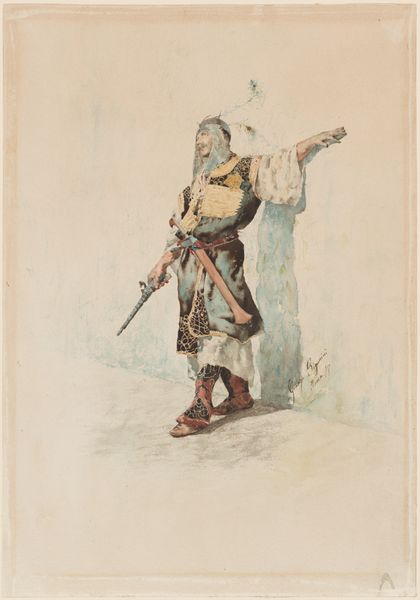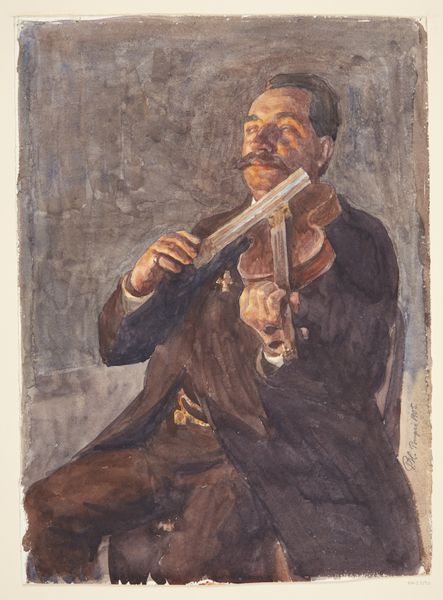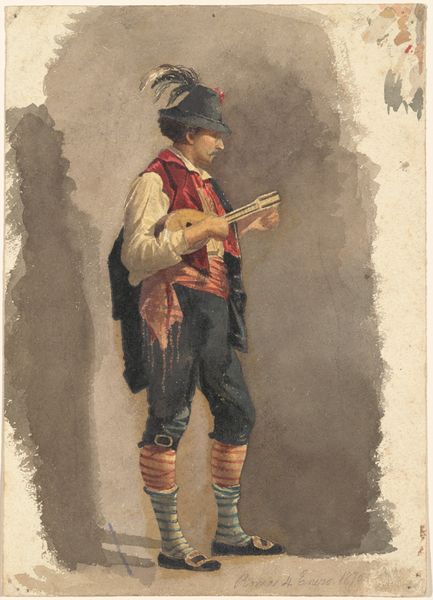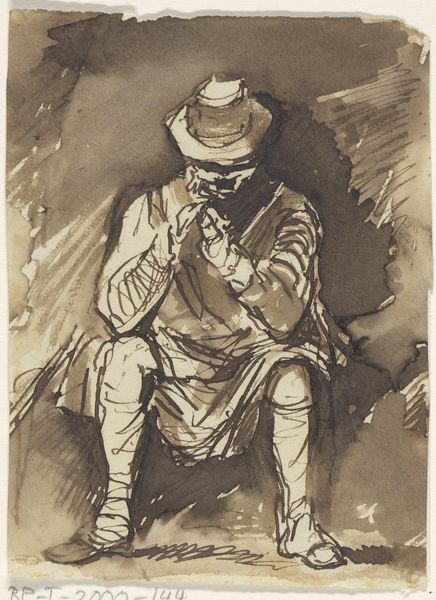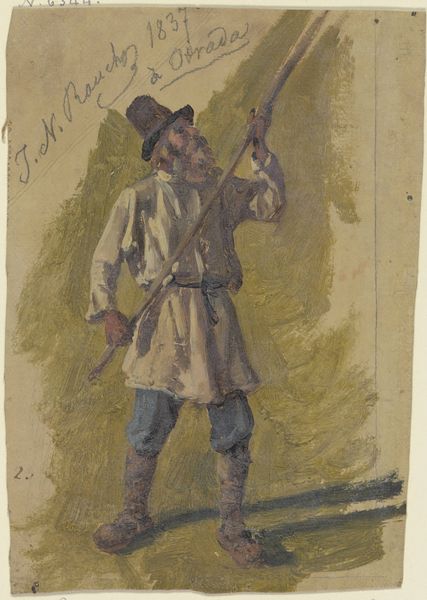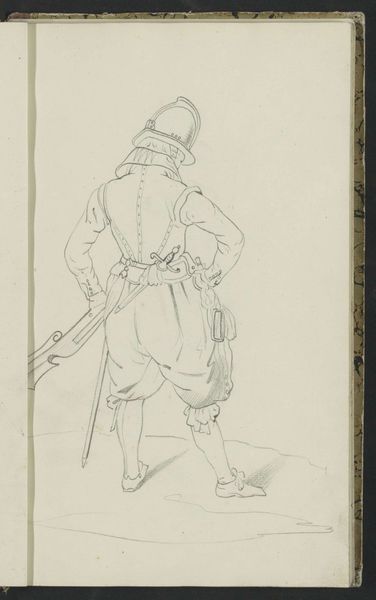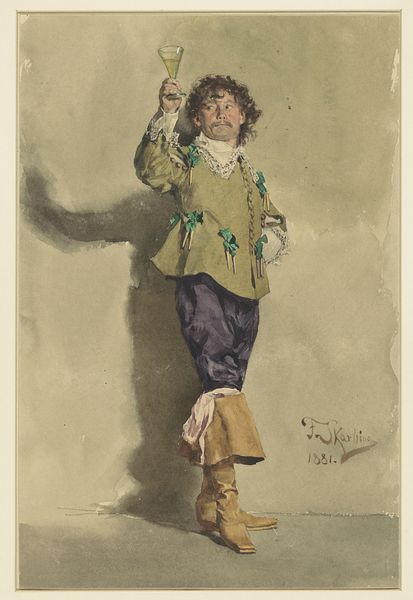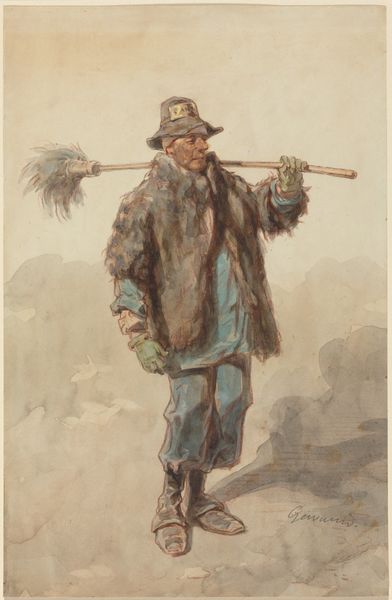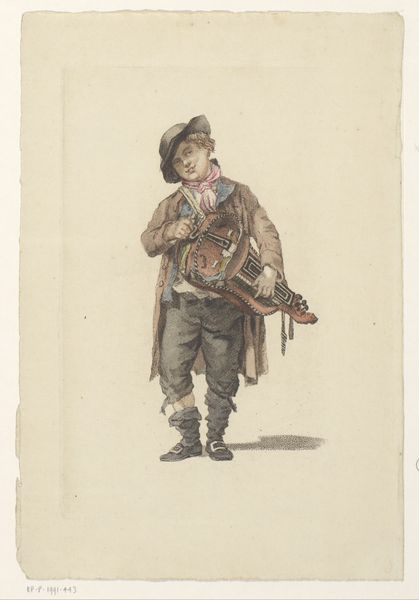
drawing, coloured-pencil
#
portrait
#
drawing
#
coloured-pencil
#
figuration
#
expressionism
#
portrait drawing
Copyright: Rijks Museum: Open Domain
Editor: This colored pencil drawing is "Geschminkte gitaarspelende man," or "Man with Painted Face Playing Guitar," made in 1919 by Otto Verhagen. The performer's exaggerated makeup gives him a sinister quality. What do you make of this striking image? Curator: It's fascinating to consider this work within the context of 1919. The First World War had just ended, leaving widespread social and political upheaval. Expressionism flourished during this period. Given that context, what is your interpretation of the performer's exaggerated makeup and theatrical pose? Editor: Maybe a way to cope with the uncertainty of that moment in history? Like putting on a mask to hide vulnerability? Curator: Exactly! Performance and spectacle often became intertwined with social commentary. This image presents questions about identity and perhaps, the performative nature of social roles in a world recovering from immense trauma. Notice how Verhagen presents the figure in isolation, set against a backdrop of shadow. How might this impact our reading? Editor: It seems like a deliberate choice to emphasize his detachment from society. Almost as if he exists solely within his own performance. Curator: Precisely! The work’s social significance may rest on how it comments on public displays of persona, or the psychology of art. We see him in a specific setting. Do you imagine his guitar music as something mournful or rebellious? Editor: Possibly rebellious, given his overall defiant, even mocking, presentation. This drawing holds a mirror up to how we behave for the sake of social expectation. Curator: Agreed. It makes me reconsider the diverse public functions of art and how even seemingly simple portraits might serve as visual metaphors for a time of transition and skepticism. Editor: That's so insightful! It encourages you to view historical art not just for aesthetic, but how they comment on culture at that time. I learned a lot today.
Comments
No comments
Be the first to comment and join the conversation on the ultimate creative platform.

